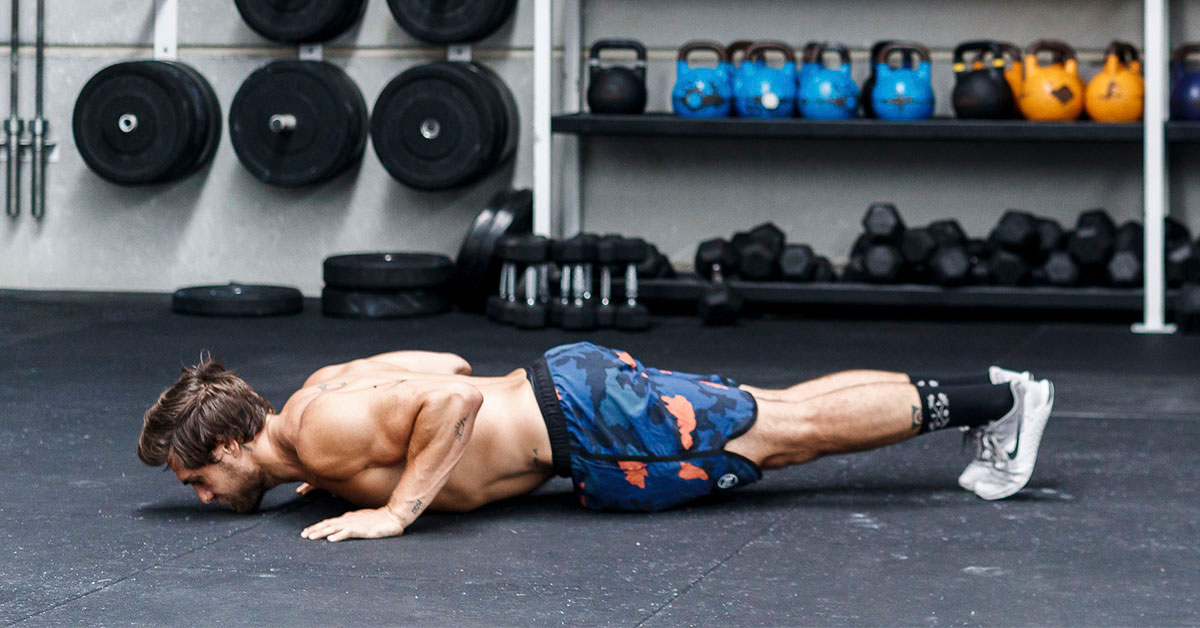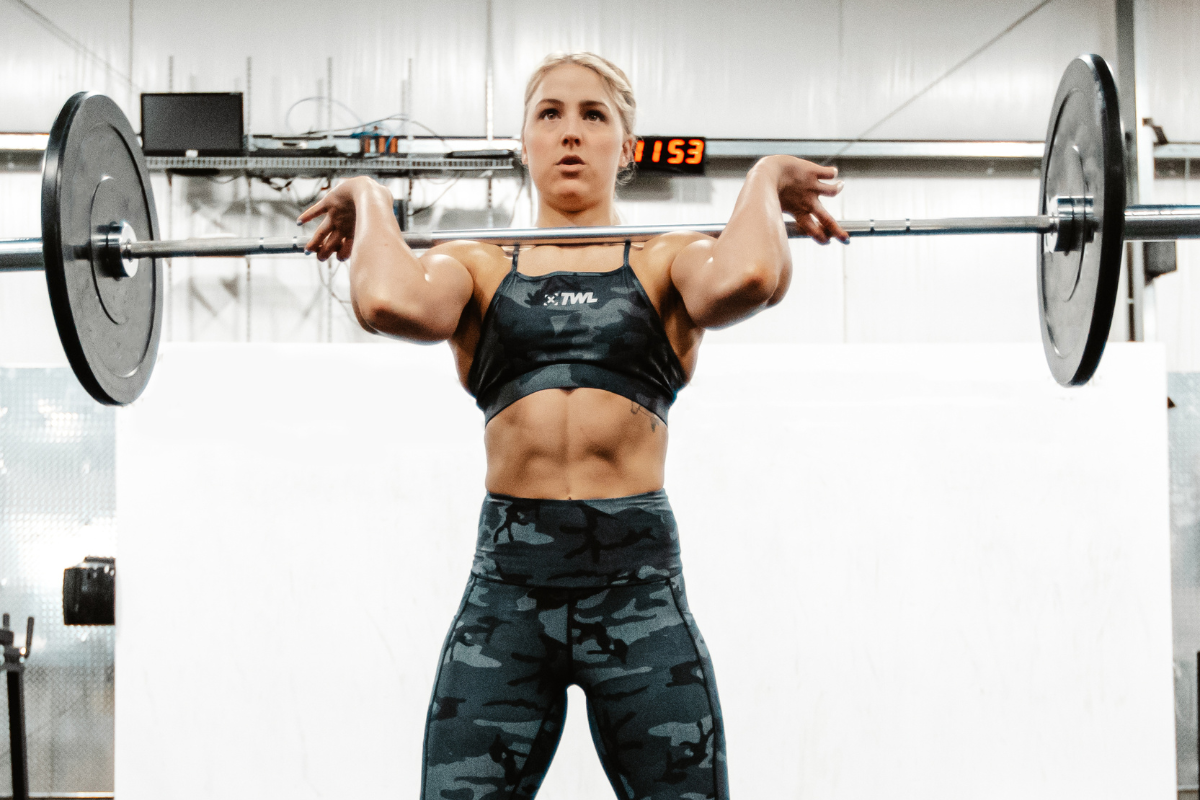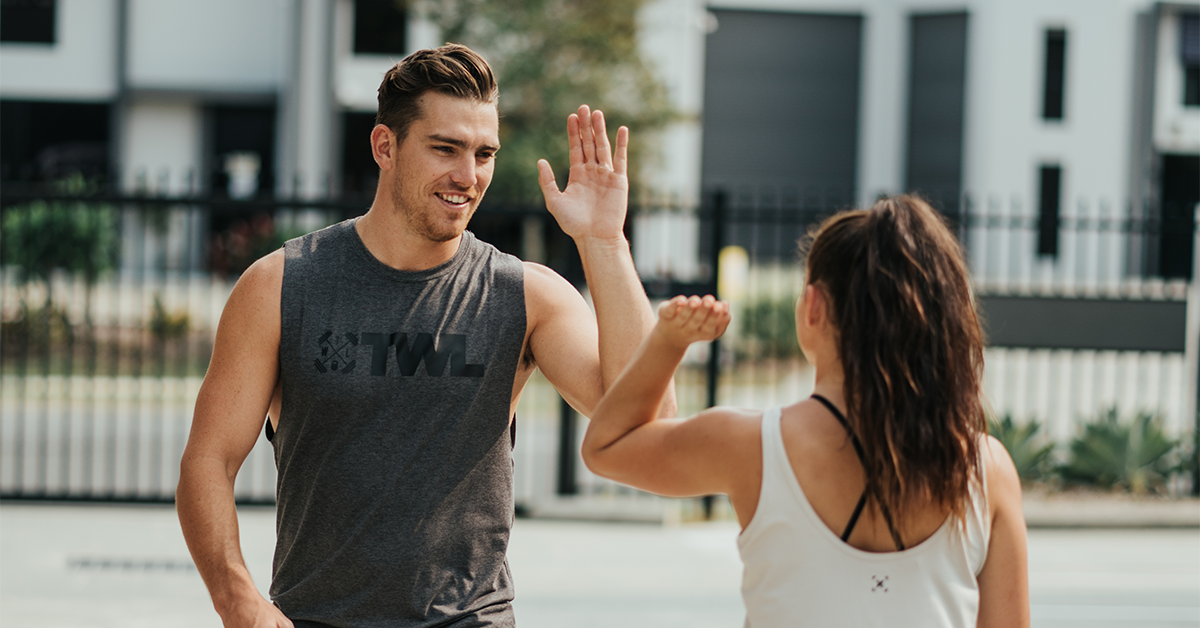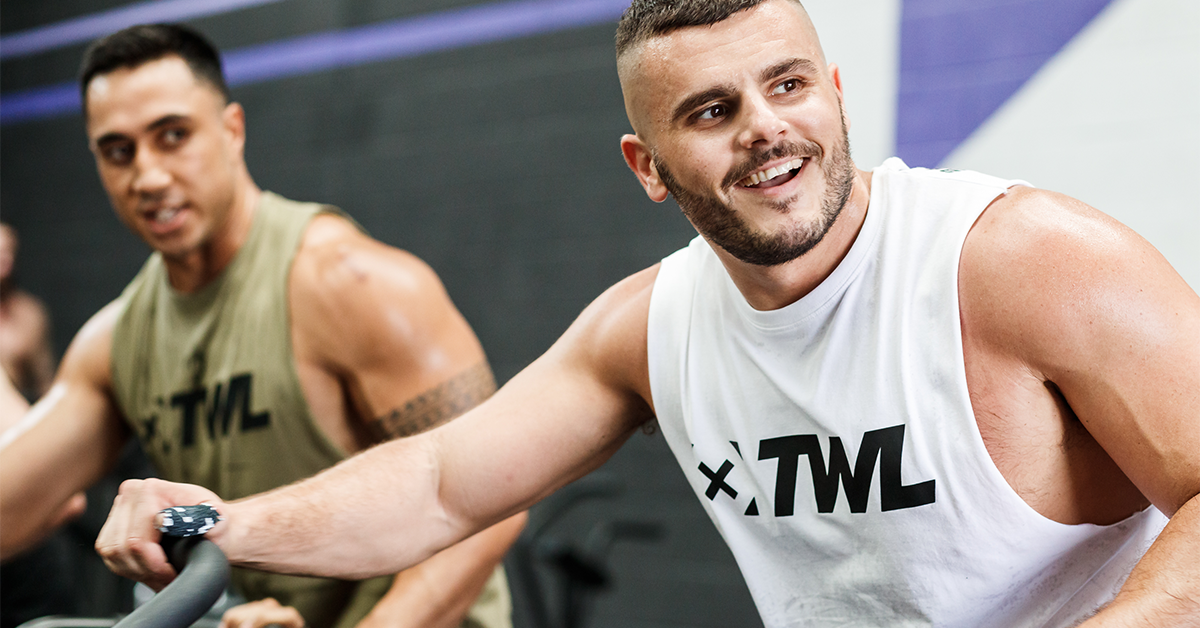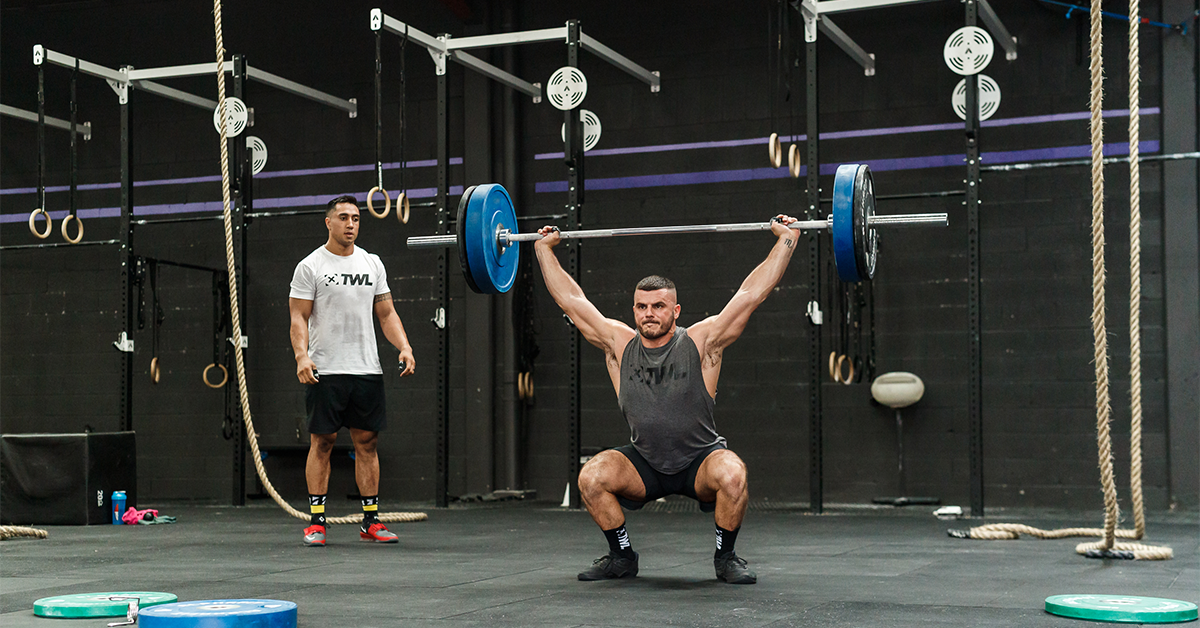You go to the box and see your peers repping out muscle-ups and double-unders, and you want to be just like them. But as the unwritten rule says, before you can run, you must learn to walk. There’s a list of movements all beginner athletes should train, but many of them don’t.
What so many athletes don’t realize is that you can indeed perform a variation of a muscle-up — it’s just a scaled-down variation. This is how we make progress in the sport: scaling.
In fact, according to CrossFit.com, “While CrossFit challenges the world’s fittest, the program is designed for universal scalability, making it the perfect application for any committed individual regardless of experience. We scale load and intensity; we do not change the program. The needs of Olympic athletes and our grandparents differ by degree, not kind.”
Basically, what that means is that the movements that Games athletes are doing are variations of the movements beginners are doing. Likewise, whether you are a newbie athlete or a seasoned vet, there are certain foundational movements that all athletes should master — regardless of your goals and experience — to become fitter, stronger, and healthier and to move better.
They may not be sexy, but they’re important.
5 Movements All Beginner Athletes Should Train (But Probably Don’t)
1. Double-Unders (Without Rope) + Single-Unders
Sure, the double-under looks simple. It’s just you, some jumping, and a rope. Child’s play, right? Actually, not so much. It turns out that double-unders are something a lot of athletes struggle with. They require that you jump a little higher and spin your rope a little faster so that it passes twice before you touch the ground.
The first step of learning double-unders is mastering single-unders. Trying to pass the rope beneath your feet twice before you can pass it beneath your feet once is like trying to run before you can walk. Once you can do 40 to 60 single-unders unbroken, then it’s time to get to work on those dubs.
But for this move, leave the rope on the ground.
Athletes tend to tense their whole body up when they do double-unders, unintentionally creating more work for themselves. This is why working without a rope can be so beneficial — it teaches you how to stay relaxed.
Double-unders without the rope are also a great opportunity to practice pacing. To execute a double-under, you need to be airborne long enough for the rope to pass under your feet. Practicing without the rope allows you to practice getting airborne without having to worry about tripping or whipping yourself.
View this post on Instagram
How To Do It:
- Practice jumping in place without a rope.
- Aim to get just a few inches off the ground.
- Are you bringing your knees to your chest? Are you bending at the waist and bringing your feet forward? Are you kicking your feet back? Try launching yourself upright as if on a pogo stick. Your body should stay relatively straight from head to feet.
Bonus: Because double-unders are a cardiovascular challenge and help improve jumping power, this exercise will benefits you across other movements in the gym, like box jumps.
View this post on Instagram
2. A Proper Bodyweight Push-up
To successfully nail a proper bodyweight push-up, your whole body has to be engaged. While the push-up is infamous for building shoulder and pec strength, it can also build core strength and glute strength.
That full-body aspect means that push-ups come with tons of benefits, such as improved posture, strength, and mobility, but it also means that they’re hard. Like… really hard.
In CrossFit, the usual push-up scaling option is to drop to your knees. But that takes out 50% of the muscles worked. Instead, doing a push-up on an elevated surface like some plates, a bench, or a box helps strengthen the muscles used during a proper push-up.
View this post on Instagram
How To Do It:
- Start on all fours with your fingers spread slightly. Step both of your feet back.
- Engage your core and keep your pelvis in neutral so that your tailbone is pointed down toward your heels. Brace your core, engage your glutes and hamstrings, and keep your entire back straight.
- Lower your body (keeping back flat and eyes focused about two feet in front of your hands) until your chest grazes the floor and your elbows are at a 90-degree angle. Keep your elbows tucked in at your sides — not flared out.
- Keeping your core engaged, exhale and push back to the starting position.
- To make the movement easier, try spreading your feet wider for a wider base.
Bonus: Because push-ups strengthen the shoulders and core in addition to the chest, mastering this move will also help with more advanced gymnastic moves such as the HSPU, muscle-up, and pull-up.
3. Air Squats
The air squat teaches you how to hinge at your hips, which is vital for a lot of movements, like back squats, front squats, deadlifts, and wall balls. If you do these correctly, you’ll be working and strengthening basically every muscle in your lower body.
View this post on Instagram
How To Do It:
- Stand with your feet hip-width apart with your arms by the sides.
- Brace your abs, push your hips back, and bend your knees, lowering your body into a squat so that your hips go below the knees.
- Pause at the bottom and push back up to the starting position.
4. Strict Pull-ups
When it comes to the functional fitness community versus those outside of it, nothing is quite as divisive as the kipping pull-up versus the strict pull-up. Whereas kipping pull-ups may be faster and are beneficial from a functional fitness standpoint, strict pull-ups are better for developing strength (thanks to the increased time under tension) and are a foundational movement for all.
Although there are so many progressions that you can do to learn strict movements, the most important thing is to constantly work on your strength and form. If you want to do a pull-up, the first step is to work on your grip strength. (In fact, studies have shown that grip strength is one of the best predictors of overall muscular strength and endurance.)
So, if you cannot do a strict pull-up, movements such as kettlebell swings, farmer carries, and plate grabs will help strengthen the grip. A stronger grip means that you will be able to hold onto your body as you pull it up, up, up.
View this post on Instagram
Then, learn how to engage your lats by hanging from the bar and trying to break it in half. Another way to practice isolating your lats is to hold a resistance band in front of you with straight arms and a wide grip. Pull the band out to the sides without bending your elbows or lifting your shoulders, making sure you feel the effort originating from your middle to upper back.
Something else that may help is looping a resistance band around the bar and doing a resistance band pull-up to help you learn the pattern of movement, especially if you use a heavy band that offers a lot of assistance. As you get comfortable with the movement, use less and less resistance until you are ready to try without a resistance band.
How To Do It:
- Grab the bar about shoulder-width apart with your palms facing down.
- Hang with straight arms and engage your lats by trying to squeeze together the middle of your back.
- Pulling your elbows to your floor, squeezing your lats, and squeezing your core, glutes, and quads, keep pulling until your chin passes over the bar.
- Lower yourself back down until your arms are straight.
Bonus: Because kipping pull-ups require greater joint stability and are often done in larger sets, improving your strict pull-ups will help keep you injury free during high-volume kipping pull-ups. Plus, developing strong forearms and forearm strength will improve your ability to cycle a barbell.
View this post on Instagram
If you can’t yet do a strict pull-up, try a ring row.
How To Do It:
- Grip the set of hanging rings with your palms facing inward. Walk your feet forward a couple steps.
- Keeping your body straight, pull yourself toward the rings until your chest touches the rings.
- Pause briefly before lowering yourself in a controlled movement, making sure not to sag your hips along the way.
5. Empty Barbell or PVC Work for the Olympic Lifts
Warming up might not be fun or exhilarating, but it’s vital to your lifts (and your safety).
Warming up a lifting session with an empty barbell or PVC pipe is a great way to prime the body for the specific movement. You don’t want to try to hit your one-rep max snatch or immediately try to clean 90% of your latest PR on a clean and jerk day without warming up. Whether you’re doing snatches or clean, warm up with an empty barbell doing three sets of 20 to 40 reps.
As you do this, pay attention to how your body is feeling. It’s an indicator of how you will feel during the workout itself. If you have a coach, ask for their input on your form. It not, try taking a video yourself and watching it back.
Warming up with an empty bar allows you to rehearse the movement while also loosening the muscles you’ll need to use in order to properly execute it.
Do you need proof that the empty barbell is no a joke? Try this empty barbell WOD from Tia-Clair Toomey.

